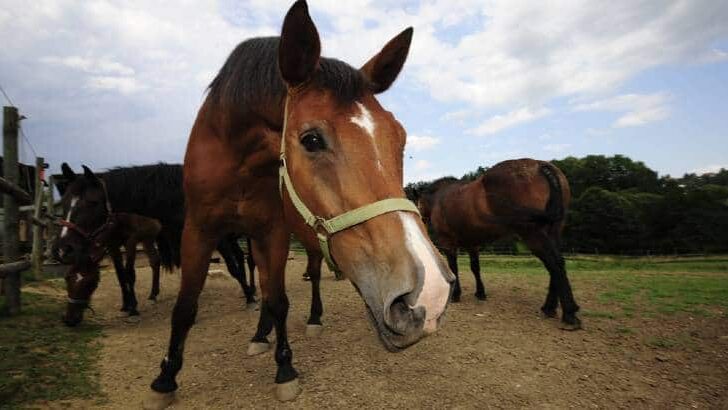Affiliate Disclaimer
As an Amazon Associate I earn from qualifying purchases. It helps me keep the website going. Thank you for your support.
Over the last few decades horse passport systems have gradually been implemented across the world. These days a horse passport it’s just one of the bits of paperwork that you may need if you are thinking about owning a horse. But exactly what is a horse passport?
A horse passport is a document that is used to identify a horse. It is required to transport horses between countries. Additionally, a passport is often required to enter horses into certain competitions. The passport will include documentation of the horse’s unique identifying characteristics, a vaccination log, and a microchip number.
That being said, you are probably wondering if your horse really needs a passport. The reality is, that these days the answer to that question is probably yes. Let’s take a closer look at which countries require horse passports.
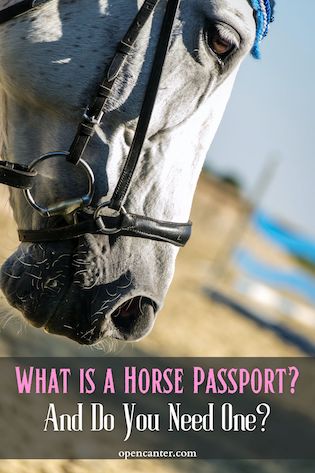
Which Countries Issue a Horse Passport?
Many countries issue passports, and in some, there is a legal requirement…
The UK
One of the first countries to make horse passports a legal requirement was the UK. Horse passports were introduced in the UK in 1997.
However, in 2004 regulation changed so that owners were required to have a passport for each horse that they owned. Incidentally, this included a requirement to have a passport for ponies, and also donkeys (source).
And in 2005, it became law in the UK that a horse couldn’t be sold, exported, bred, or entered into a competition without a passport.
Europe
From the start of 2016, all horses born in the European Union (EU) were required to have a passport. This law applies to all countries that are members of the EU. The legislation states that this passport needs to have been issued before the foal is one year old (source).
The US
Whilst it isn’t the law in the US that all horses have a passport, passports are required to do many things. For example, a passport is required if you want to transport your horse between countries. Also, you will need an official horse passport to enter your horse into any FEI competitions in the US.
What Information is in the Horse Passport?
Horse passports vary between countries, however, they usually contain much of the following information:
- Basic information about who currently owns the horse. It will also usually keep a log of previous owners.
- Key information about the horse, including its sex, color, date of birth, and height.
- The horse’s name will be included. It is possible to change your horse’s name on a passport. However, the horse’s birth name will remain on the passport. And an additional section will be completed to include information about the horse’s change of name (source).
- A Unique Equine Life Number (UELN). This is a 15-character number that is given to a horse when it is registered with a particular horse society or breed registry. The first six characters of a UELN are the unique number assigned to a particular passport-issuing organization (PIO).
- The Horse’s Microchip Number
- A description of any unique identifying features that the horse has. This includes white markings and whorls (cowlicks) in the horse’s coat and other features such as scars. I’ll say more about identifying features below.
- A drawing of the horse’s unique identifying features. In addition to a written description of the horse, the passport will include a drawing of the markings as well. Part of the reason for this is that if the microchip fails for any reason, a detailed drawing of the horse will be available.
- A record of the horse’s vaccinations. One of the most important of these is the horse’s vaccination for influenza which needs to be updated every six months. However, it will include a list of other vaccinations too such as encephalitis.
- Documentation of the competitions that the horse has been entered into, and details of where that horse has been transported.
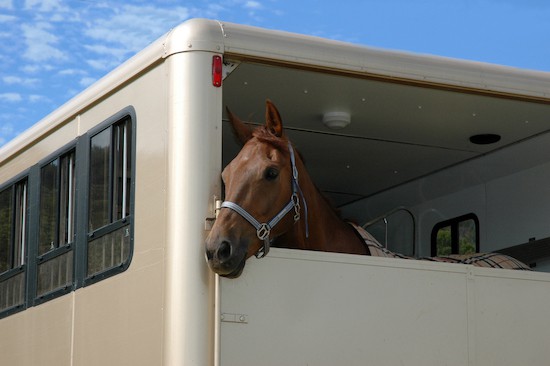
How Does a Horse Get a Passport?
In some ways applying for a horse passport is similar to applying for a human passport. You will need to apply to the relevant passport-issuing organization in your country. This will vary depending on where you are in the world.
In some countries such as the US, there is a national organization that is responsible for issuing horse passports across the country. In the US this organization is the US Equestrian Federation (USEF).
Owners need to apply to the USEF for an application form. In order to apply for a passport for your horse, the horse must have lifetime registration with the USEF. In addition to this owners need to be active members of the USEF and be US citizens.
Once the application has been approved by the USEF, the horse will be issued a passport. This will it allow it to enter into FEI competitions. The FEI is the Fédération Equestre Internationale and is the international governing body for equestrian sports.
In other countries such as the UK, there are a number of passport-issuing organizations that are recognized by the UK government. The main organization for applying for a horse passport in the UK is the British Equestrian Federation.
However, there are other organizations that may represent a breed of horse or horses that specialize in a particular discipline. One example of this is the Hurlingham Polo Association, which is an international organization of the sport of polo. Owners of polo horses and ponies can apply for a passport through the HPA.
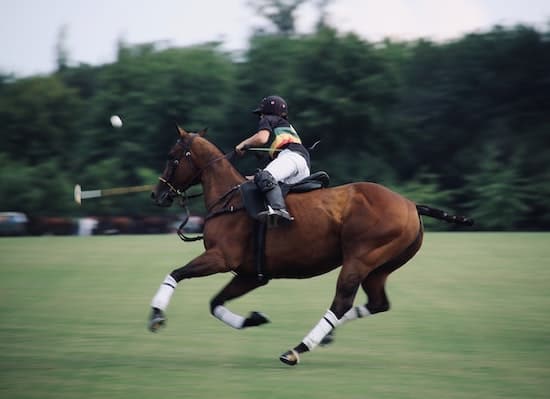
How to Apply for a Horse Passport
The process of applying for a horse passport will vary from country to country. To find out what organization is responsible for issuing horse passports within your country you can check out the FEI website.
The FEI has 136 affiliated national federations. This means that the horse federations within these countries become affiliate members of the FEI and follow their protocol.
Each country’s horse federation will have its own individual route to applying for a horse passport. The guidelines will be set out on their own website.
If you want to know which Federation to apply through you can take a look at a list of all the member nations on the FEI database here.
To compete in an FEI competition a horse needs to have an official FEI passport. If a horse has a national passport, this can be upgraded. The way to upgrade our national passport is to apply to the FEI for a recognition card.
A recognition card is a document that supplements the national passport. It is an indicator that the national passport belongs to an organization that is recognized by the FEI.
Whilst different countries will have their own application processes, certain aspects of applying for a horse passport are reasonably standard. Let’s take a look at some of the things that you will be expected to do during the application process…
Steps to Getting a Horse Passport
There are a few steps to completing the application, including the following:
1) A Visit From the Vet
Once you have received the application form you need to organize for a vet to inspect the horse. Part of the inspection involves the vet making a record of all the distinguishing features of the horse.
The distinctive marks include the following:
Whorls, also known as Cowlicks; These are areas on the horse where there is a change in the pattern or direction of the hair.
White marks; these marks can have quite a few distinguishing features. For example, they may be regular or irregular. Or they may be one block color or mixed with the horse’s coat in part or around the edge.
Alternatively, the white marks may have a band of black skin showing under the white hair at the edge. The vet will make a note of any marks on the horse’s head, limbs, and body.
When the vet makes a drawing of the horse’s white marks these are added to the drawing in red biro.
Other peculiarities; in addition to the above, a note will also be made of any other distinguishing features. This might include for example wall eye, nicks in ears, scars on the body, and identifying features of the horse’s coat. All marks that are not white marks or added to the drawing using a black biro (source).
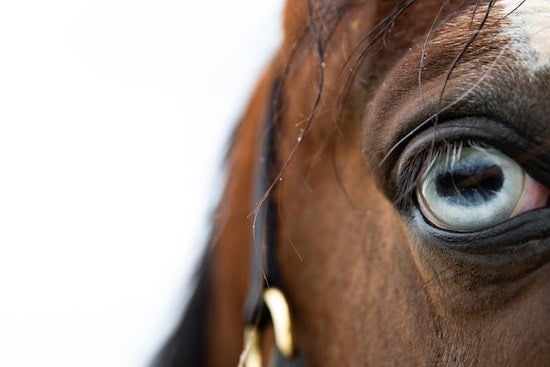
2) Microchipping the Horse
One of the other things that the vet will do during the inspection is to microchip the horse. A microchip is a small piece of metal about the size of a grain of rice. It has identifying information on it, and it is inserted into the horse’s neck.
Horses have a strong wide ligament that runs down the top half of their neck. This is called the nuchal ligament and it’s what holds the horse’s head up.
The vet will inject the microchip into the nuchal ligament during the visit. Each microchip has a 15-digit number associated with it. A database of these microchips will contain information about the owner’s name, address, and contact number.
3) Signing Off the Forms
Once the inspection has been done, and the horse’s vaccinations are up-to-date, the forms are signed off by the vet. These forms are then sent back to the organization that authorizes passport applications.
What is the Purpose of a Horse Passport?
Horse passports have a number of functions, here are a few of them:
Proof of Identity
Much like a human passport, horse passports are used mainly to provide proof of identity. This is important when transporting horses and also entering a horse into a competition. A passport is an essential way to prove that a horse entering a competition is the correct horse.
Controlling the Spread of Disease
They are also a way of exercising some control over the spread of illness and disease. The horse’s vaccinations need to be up-to-date on a passport. This means that horses that are at risk of infection or not able to travel between countries or attend equestrian events.
Protecting the Food Chain
Another slightly more ghoulish function for passports in some countries is to protect the food chain. Different countries have different beliefs and values about the eating of horsemeat.
In some countries, there is a taboo around eating horse meat. Two examples of this are the UK and the USA, where horsemeat is rarely knowingly consumed. However, there are countries where horsemeat is considered something of a delicacy.
A passport can be used to prevent a horse from entering the food chain. For example, in the UK, the owner can use the passport to exclude the horse from being used for human consumption.
This is important because certain drugs that are administered to horses are harmful to humans if consumed. If the horse may end up in the food chain, these drugs cannot be used to treat the horse.
It’s unsettling to think about, but like it or not in some countries horses are considered to be food-producing animals. As such a passport is an effective way of monitoring what does and does not go into the food chain.
Final Thoughts
These days horse passports are not just restricted to high-caliber performance horses. In some countries, they are a legal requirement for all horses. In others, they are a necessity if you want to do anything other than plod around the paddock. So, what is a horse passport? It’s a helpful way of collating essential information about your horse. And it’s also a ticket to freedom enabling you to ride your horse where and whenever you want.

